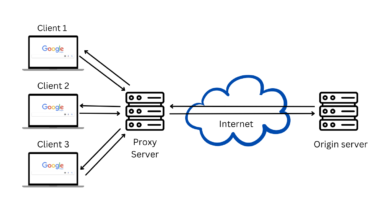
Could One Line of Code Be Costing You Millions in International Markets?
A developer leans back in their chair, confident the app looks perfect on their screen. Everything works flawlessly in the local market. Users log in, swipe through menus, and make purchases without a hitch. But when it comes to the international markets, things are complex. Buttons overlap, menus break, and dates appear in strange formats. That results in frustrated users, dropped ratings, and stalled revenue.
All because of a tiny oversight. One line of code that didn’t account for local languages, cultural expectations, or formatting quirks. It sounds almost funny, right? But in reality, this kind of oversight can cost millions. This is where software localization comes in. Professional companies specialize in catching these tiny gaps before they grow into big problems.
Table of Contents
One Mistake Can Have Big Consequences
If you think, “It’s just one line of code—how much damage can it do?” The answer: plenty. In global markets, every little detail matters. A wrong date format, a button that doesn’t make sense, or even a single untranslated word can frustrate users instantly. People don’t spend time figuring things out. They leave. And when thousands of users encounter the same issue, small mistakes can become huge revenue losses.
The scary part? You often don’t notice until reviews pile up or transactions fail. That one tiny line of code quietly bleeds revenue, one frustrated user at a time.
Software Localization Is More Than Translation
Here’s a common misconception: software localization is just about changing the language. Not true. It’s about making the whole product feel native to the market.
Think about something as simple as how numbers appear on the screen. A banking app in the U.S. might show “1,200.50,” while the same amount in Germany appears as “1.200,50.” It looks tiny, almost unimportant. But when it shows up wrong, users immediately feel something is off. They start wondering whether they can trust the app at all.
A product can be beautifully coded and still fall flat in another country. Without solid software localization, the experience just doesn’t feel right to the user.
Game Localization: Every Detail Counts
Games are even trickier. A culturally insensitive gesture or a joke that falls flat can ruin the experience. Gamers are picky and notice details instantly. And once trust is broken, players leave.
Game localization is about more than words. It’s about making players feel the game was built for them. All elements must align with local expectations, including:
- Story
- Characters
- In-game instructions
- Menus
When Tiny Problems Turn Into Big Losses
Let me give you a real-world-style scenario. Imagine an e-commerce app launched in Japan. One line of code doesn’t adjust the layout for longer Japanese text. Buttons overlap checkout options. Users get confused. They abandon their carts. Thousands of potential transactions vanish. And all of it could have been prevented with early localization.
This isn’t rare. Many companies assume translation is enough. But a product may speak the right words yet feel “foreign” in other markets. The result? Frustrated users and lost revenue.
Why MarsTranslation Makes a Difference
This is where a partner like MarsTranslation becomes essential. They don’t just translate; they adapt your software to behave naturally in every market. Text expansion, interface tweaks, graphics, and date and number formats—they cover it all.
Working with experts early in the process catches issues before launch. And by the time your product hits international markets, it feels native and trustworthy.
Early Localization Saves Time and Money
Many companies delay localization until after launch. Big mistake. By then, fixing errors is expensive, and reputation damage is done. Early localization ensures every line of code is international-ready. It also prevents those small oversights from snowballing into major problems.
Think of it as insurance. It costs time upfront but saves a ton later. And in fast-moving markets, time lost equals revenue lost.
Localization Builds Trust Without Saying a Word
Here’s the thing: users notice when a product feels native. Subtle things—the flow of menus, the way instructions are written, even the look of buttons—send a message: “This app understands me.”
Good software localization and game localization make users feel seen. They don’t just use the app—they trust it. And trust equals engagement, loyalty, and repeat business. Skipping localization might save a few hours now, but it costs exponentially more in lost user trust.
It’s Not Only About Code, It’s About Culture
Localization goes beyond coding fixes. It’s about cultural adaptation. Instructions might need rephrasing. Colors or icons may need changing. Even the order in which features appear can matter.
It all comes down to one simple rule: the user should feel like the product was designed with them in mind. That’s the difference between an app that launches and flops and one that succeeds across continents.
One Line of Code Can Change Everything
Global launches are exciting, but they hide many small pitfalls. Every line of code has the power to support or sabotage your international strategy. Software localization ensures nothing is overlooked. Game localization guarantees that players enjoy the intended experience everywhere.
Professionals turn tiny details into growth opportunities rather than costly mistakes. So before you launch your product in a new market, ask yourself, “Have we truly made it native?” One line of code might cost millions—or unlock a world of users. The difference lies in preparation, care, and the right localization partner.








